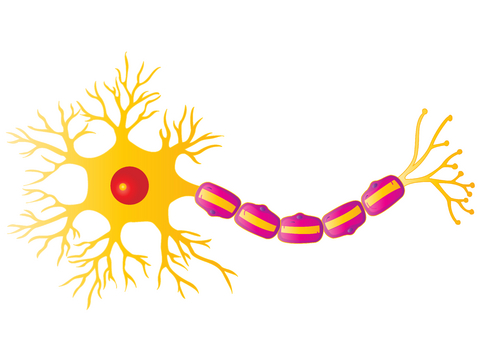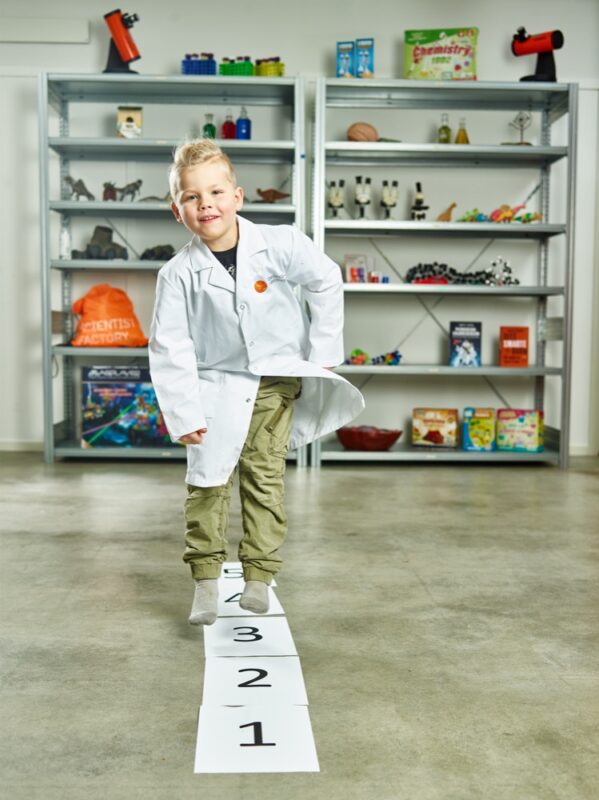Brain, Mathematics
Math Skill Starts With the Innate Number Sense
By Hanne S. Finstad, founder of Scientist Factory and Ph.D.
Newborns can tell the difference between a little and a lot. Animals are also able to distinguish between quantities. This ability, called the innate number sense, is also the origin of math skills.
A 2019 study from Stanford University shows that innate number sense is fundamental to mathematical abilities. The researchers recruited 35 children aged 7-10, half of whom struggled with mathematics. The children received unusual math lessons three times per week for four weeks. They spent significant amounts of time comparing quantities in the shape of dots on pieces of paper, determining where there were the most and least dots. The results showed that this practice had a beneficial effect. Both groups of children improved their math skills, and the conclusion was that training the innate number sense helps.
Neurons hard at work
The researchers also mapped the children’s brain activity before and after the experiment. There were considerable differences initially. The children who struggled with mathematics used the brain areas important for working with numbers only to a minimal extent. Other brain areas were active. This pattern changed after four weeks of training the innate number sense. Not only were the children who struggled with math better at arithmetic, but their brains also acted more like the brains of the children with good math skills. Both groups now had significant activity in the brain area intraparietal sulcus. This area is home to neurons that deal with numbers. Even before we learn mathematics, these neurons help us distinguish between quantities. Gradually, as we learn math, they develop, and we can understand precise amounts and connect them to numerals and words.

Comparing dots helps
The Stanford study is just one of many to show that practicing distinguishing quantities may make us better at mathematics. Even adults who face no particular challenges with math become better at addition and subtraction if they “warm up” their brains by comparing quantities in the shape of dots.
Animals have number sense
This part of number sense, called the Approximate Number System (ANS), must have evolved long ago. We find this ability in many species besides humans, which indicates that it must have originated with a shared ancestor many years ago. You can do a fun experiment if you have a cat, dog, or another pet that loves food. Serve the food in two bowls where one bowl has more food than the other. Where does the animal go first? Most likely, they will pick the bowl with the most food. It makes a lot of sense that such an innate number sense exists from an evolutionary perspective if you think about it. Many animals are more likely to survive if they can evaluate where there is more food or fewer enemies.

We have two innate number systems
Studies of indigenous people in the Amazon have illuminated the workings of the innate number sense. They can distinguish precise amounts from one to three but can only approximate larger amounts. Their languages rarely include words for numbers larger than three. But they can easily see that 85 parrots are more than 80. They just don’t know how many there are. Recent findings from neuroscience explain why this is. It turns out that our innate number sense consists of two systems. One gives us the ability to quickly and accurately determine quantities from one to three, maybe even four or five. The other is the Approximate Number System, which enables us to estimate without knowing the exact amount.

How math skills start
The innate number sense has to develop if children are to learn mathematics, and this can only happen through stimuli from the surroundings. They have to count, connect the counting to specific amounts, and gradually to numerals. We do not yet know how this happens in the brain, but it probably combines the two number systems. The ability to quickly and accurately determine quantities smaller than three connects with the Approximate Number System. Gradually, the child understands that five, eight, and ten are precise quantities and expressable through words. They then learn to connect number words to numerals and their letter equivalents.
Time, space, and mathematics
Fascinatingly, the brain areas that help us understand time and space are located next to the neurons that help us with mathematics. In other words, it looks as though time, space, and quantities are connected in the brain. We see this in language too. We tend to illustrate time with geometrical shapes such as a timeline.

Number lines and mathematics
The close connection between numbers and space might explain why children experienced with number lines have an easier time doing arithmetic. This connection might also explain the great benefit of building toys. Many studies indicate that using number lines helps children understand the relationships between numbers. In one such study, 16 children aged 8-10 who had dyscalculia participated and 16 with average math skills. They practiced number line understanding 15 minutes per day for five weeks. All the children became better at arithmetic and understood the number line better. The brain activity in the children with dyscalculia became the same as children without math learning difficulties.

The fingers are important
Scientific evidence suggests that using the fingers to count is essential in developing the number sense. Children begin counting on their fingers in every culture. The explanation for this might be that the neurons responsible for numbers are located close to the neurons that control our fingers, and it is probable that the two brain areas cooperate. Children who have poor fine motor skills in their fingers tend to struggle with math. Children who play instruments where the fingers are necessary, such as the piano and guitar, might have an advantage with mathematics.

We are born with a number sense, but have to work to get a math brain
Adults who struggle with mathematics often say they simply do not have a math brain. This is a poor excuse, because no one is born with a brain that is especially good at maths. We have no brain areas dedicated to equations, fractions, and percentages. From a historical perspective, mathematics is a relatively new invention that has not yet had the time to influence our biological evolution. But our brain comes with a neat number sense, and it is this sense we have to further develop if we are to become good at maths.
How to help your child develop their number sense
- Compare quantities such as longest/shortest, many/few, lightest/heaviest, and smallest/largest
- Use a measuring band, ruler, and thermometer to measure things and talk about numbers
- Count in different situations and use the fingers to do so
- Count in different ways such as backwards, increasing with two or three, and so on
- Let the child play with building toys
- Look at watches and clocks and talk about time and numbers
Sources
- Number Training Remediates Math Difficulties in Children: Behavioral and Neural Correlates, S Karraker et al, IMBES-conference, 2018
- Brief non-symbolic, approximate number practice enhances subsequent exact symbolic arithmetic in children. D Hyde et al, Cognition, vol 131, p 92-107, 2014
- The Number Sense. S Dehaene, Oxford University Press, 2011

